Military hardware that became symbols of victory in WWII
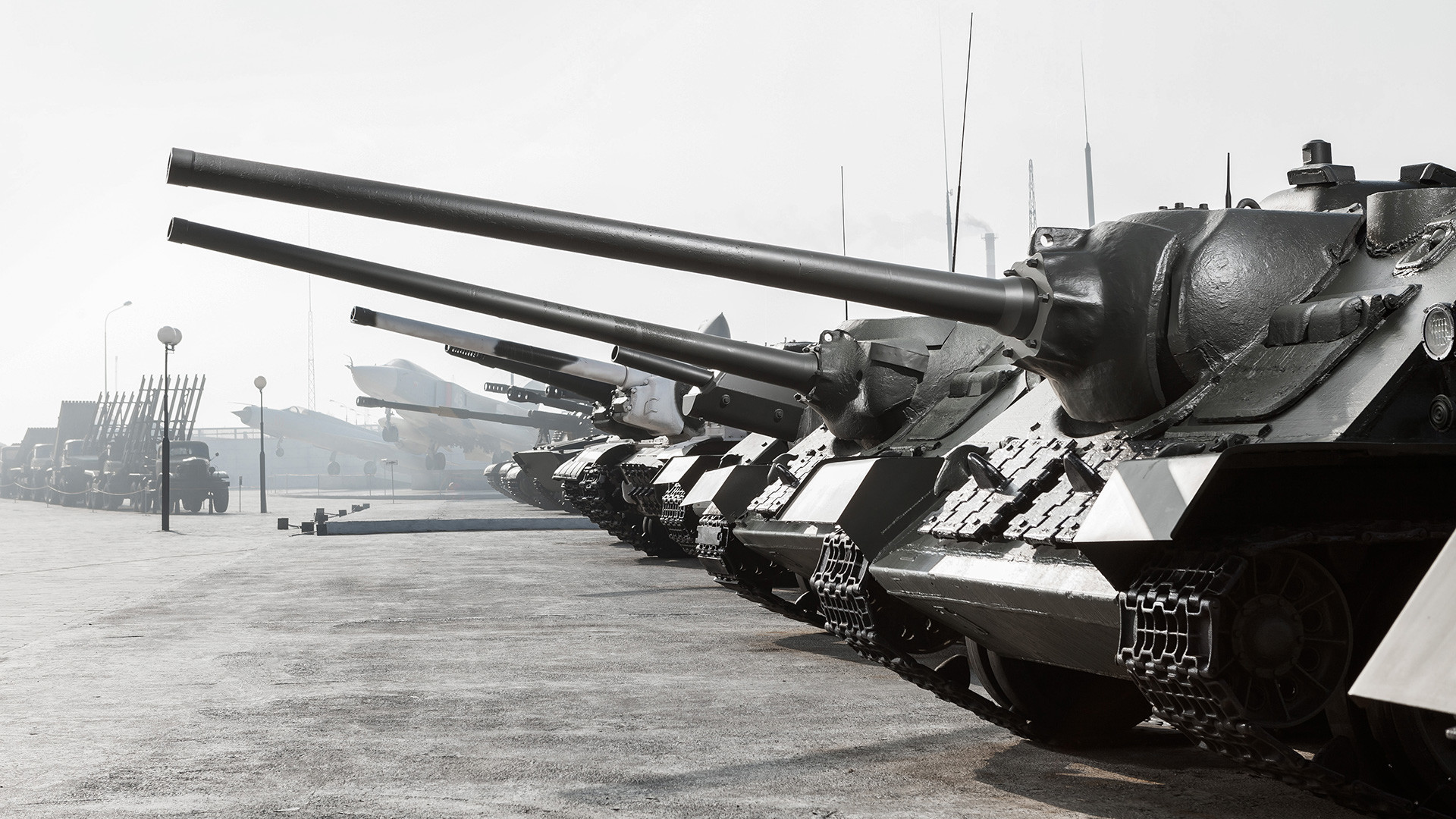
The legendary ‘Donkey’
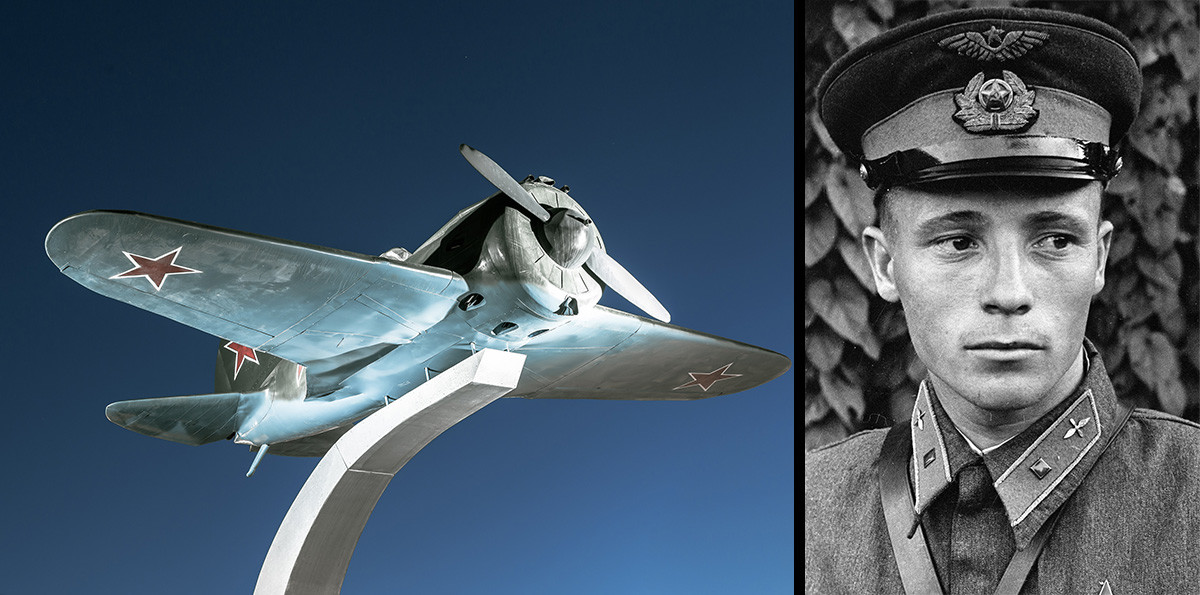
I-16; Viktor Talalikhin.
Nikolay Kovalevsky/UMMC Museum of Military and Civilian Equipment; Vasily Malyshev/SputnikAt the beginning of the war, the Red Army’s main fighter plane was the Polikarpov I-16. At only six meters long, it was one of the smallest aircraft of the time. It was introduced in the mid-1930s and during its lifespan it witnessed a large number of military conflicts: The Civil War in Spain, the Second Sino-Japanese War, the battles of Khalkhin Gol, the Soviet-Finnish Winter War… The Spanish nicknamed it ‘Mosca’ (“Fly”), the Chinese called it ‘Swallow’ and the Japanese ‘Abu’ (“Gadfly”). But in the Soviet Union, the fighter was known as ‘Ishachok’ (“Donkey”). It was the first Soviet aircraft with retractable landing gear. During the initial test flights, pilot Valery Chkalov had great difficulty in retracting it - the model was quite hard to steer - and he was rather critical of it. Subsequently, the fighter jet was improved, and in the early days of the war, ‘Ishachoks’ confronted German Luftwaffe planes and often even rammed them. I-16 pilot Ivan Ivanov is considered to be the first to do so just 25 minutes after the war had started [on June 22, 1941]!
Flying an I-16, pilot Viktor Talalikhin used the “taran” ramming tactic, which would eventually go down in history. On the night of August 6-7, 1941, the 22-year-old junior lieutenant received orders to take to the sky to intercept German bombers. Near the village of Kuznechiki, literally a few kilometers outside of Moscow, he encountered machine-gun fire from a Heinkel He 111 and decided to ram it. Talalikhin hit the tail of the German bomber and managed to parachute to safety. For his heroic deed he was awarded the honor of Hero of the Soviet Union.
The easiest fighter to fly
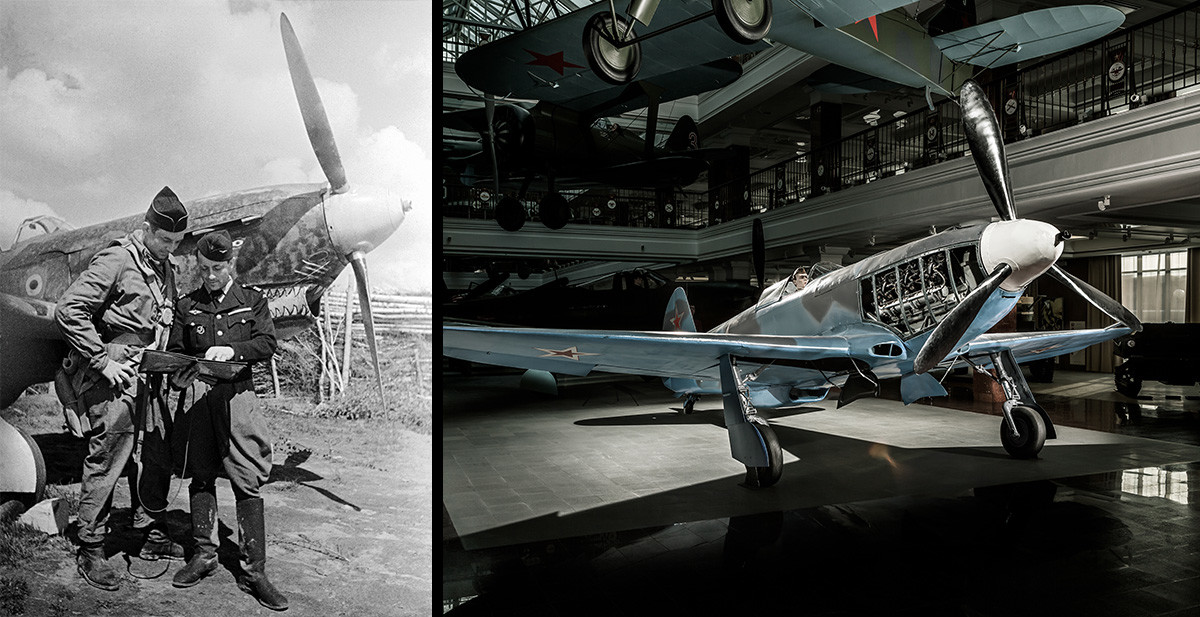
The Normandie-Niemen Fighter Regiment pilots; Yak-3.
Nikolay Kovalevsky/UMMC Museum of Military and Civilian Equipment; Sergey Loskutov/SputnikIn June 1945, pilots of the Normandie-Niemen Fighter Regiment landed at Le Bourget airfield in France in their Yak-3 fighters. They were deemed the easiest to fly and the most maneuverable among the aircraft of the time, and the French wanted to fly only them. In flying the Yak-3 fighters, French pilots took part in the liberation of Lithuania (the Baltic Offensive) in November 1944 and in the fighting in East Prussia in 1945. At the end of the war, the USSR donated about 40 such aircraft to France, and nowadays, one of them is on display at the Le Bourget Air and Space Museum.
An armored ghost
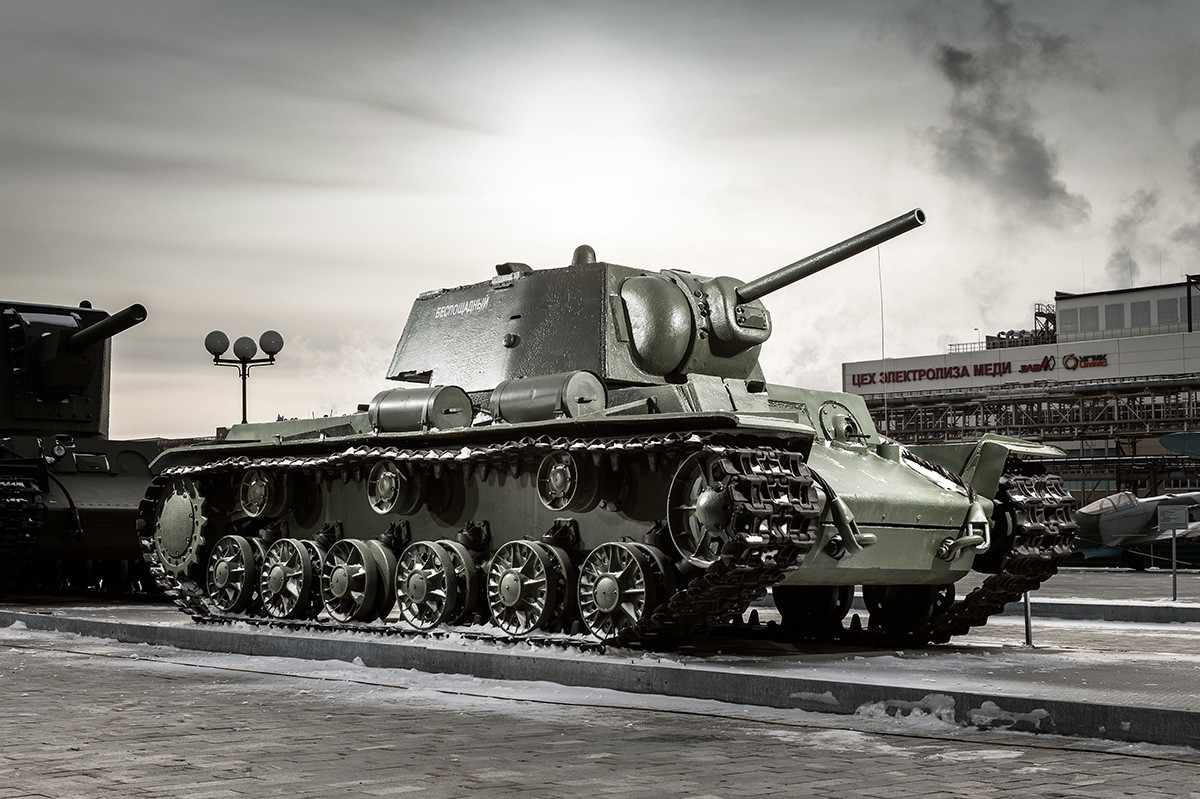
KV-1 tank at the UMMC Museum outside Yekaterinburg.
Nikolay Kovalevsky/UMMC Museum of Military and Civilian EquipmentThe KV-1 tank (named after Kliment Voroshilov, the USSR’s People's Commissar of Defense) was nicknamed ‘Gespenst’ (“Ghost”) by the Germans. Indeed, the tank came as a great surprise to them. Weighing in at 47 tons, the KV was protected by 750 mm thick armor, which was effectively impenetrable at the time. KV tanks were used throughout 1941 and 1942 to stop the Germans on the Western Front. In June 1941, in the Battle of Raseiniai (in present-day Lithuania), one KV tank held off an entire German military convoy for two days. At night, saboteurs tried to blow the tank up, but all they managed to achieve was to damage its caterpillar tracks. The tank was immobilized and became a firing target. Only an anti-aircraft gun succeeded in destroying it, along with its crew.
The tank that changed the course of the war
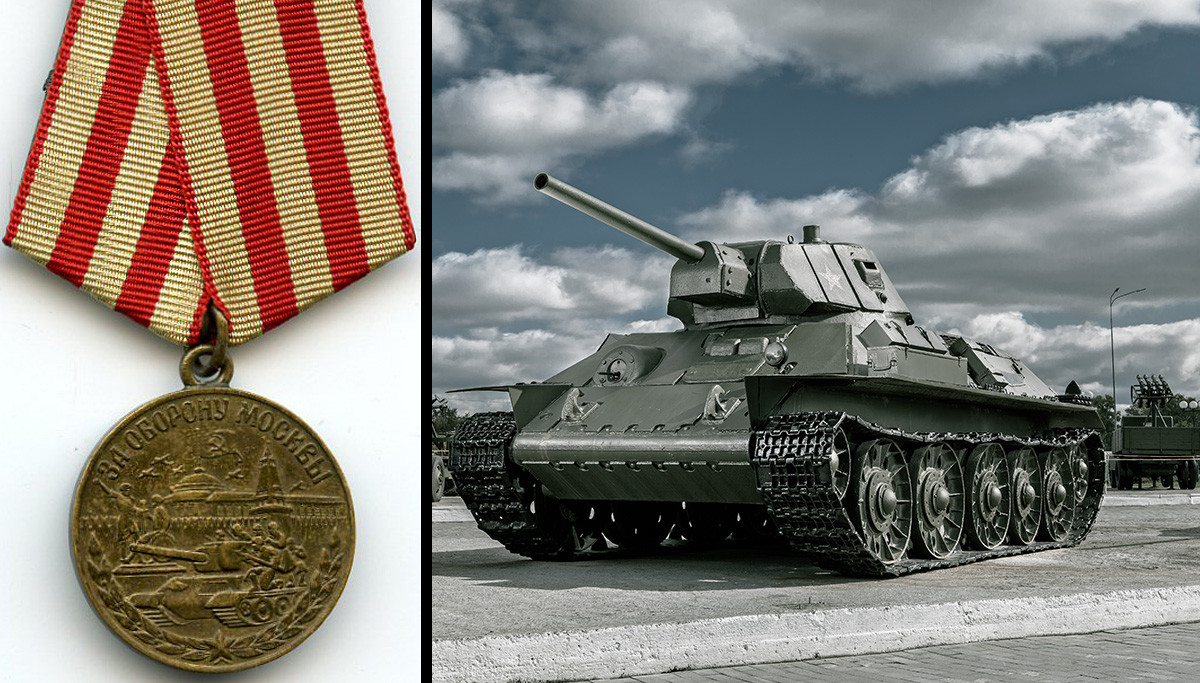
The ‘For the Defense of Moscow’ medal depicts a T-34 tank with the Kremlin Wall in the background.
Nikolay Kovalevsky/UMMC Museum of Military and Civilian Equipment, Fdutil (CC BY-SA 3.0)The T-34 is one of the most recognizable symbols of the war and was the most mass-produced tank in the USSR. In the Urals alone (in Nizhny Tagil, Chelyabinsk and Sverdlovsk/present-day Yekaterinburg), about 25,000 T-34 tanks were produced between 1942 and 1944. T-34 tanks were also assembled in Kharkov (Ukraine), Gorky (Nizhny Novgorod), Stalingrad (Volgograd) and Omsk.
In the north of Moscow Region, there is a T-34 museum, which is the only museum in the world dedicated to just one tank. It was here, near the village of Sholokhovo, just 30 km from the Kremlin, that the advance of German troops was halted in December 1941. In a counterattack by the Red Army, a special role was played by the new Soviet T-34 medium tanks, which managed to drive the enemy back almost 250 km from the capital. A single crew, under the command of Senior Lieutenant Dmitry Lavrinenko (a “tank ace”), destroyed about 50 German tanks in two months during the defense of Moscow.
The turning point of the war came after the Battle of Kursk, the biggest tank battle in history, in which about 2 million people, 6,000 tanks and 4,000 aircraft were involved. Two-thirds of the Soviet tanks were the T-34 medium tanks.
“T-34 turrets were also installed on other hardware, for example the ‘Project 1124’ and ‘Project 1125’ armored riverboats of the Danube and Volga flotillas which, for this very reason, were called ‘river tanks’”, says Grigory Pavlyukov, head of the excursions department at the UMMC Museum of Military and Civilian Equipment.
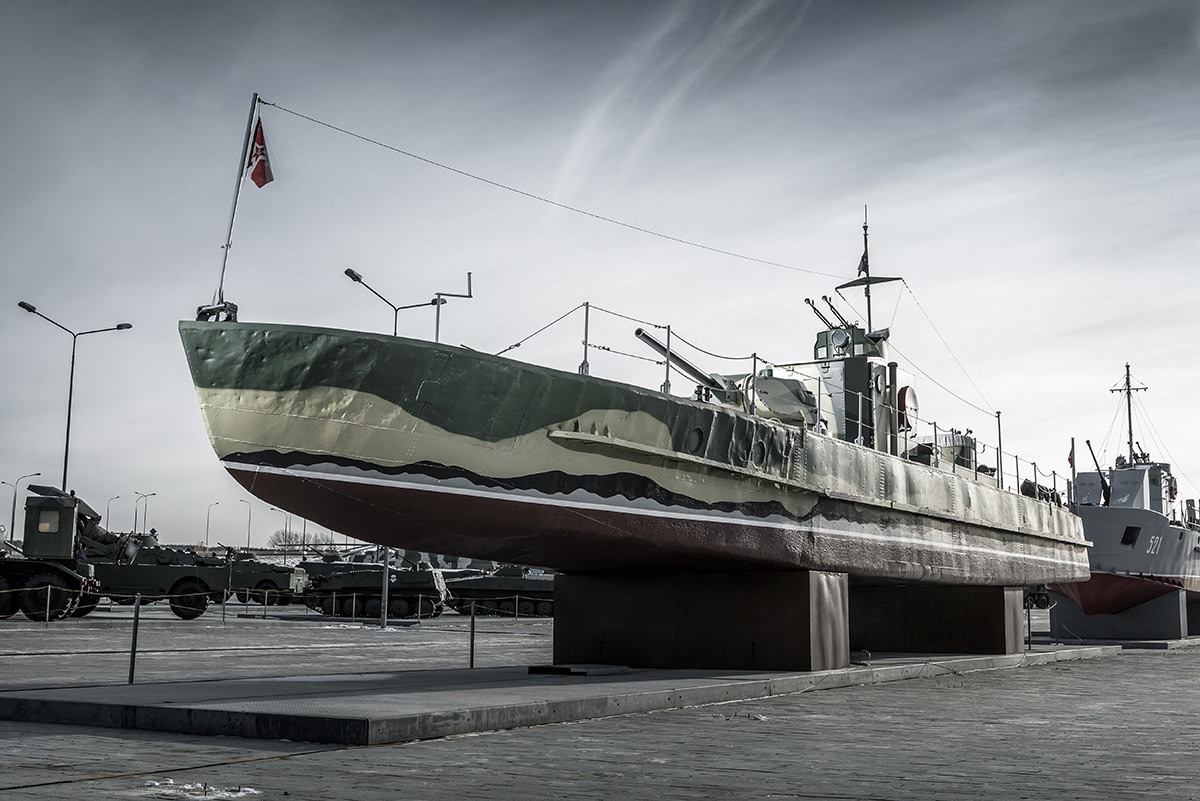
This riverboat was directly involved in the Battle of Stalingrad in the fall of 1942. During disembarkation of the wounded at the Severny quay, the boat was sunk by the Germans.
Nikolay Kovalevsky/UMMC Museum of Military and Civilian EquipmentDuring the war years, many factories, collective farms and even creative associations raised funds for the manufacture of military equipment. In 1944, money donated by parishioners of the Russian Orthodox Church paid for the construction of the Dimitry Donskoy convoy, consisting of 40 tanks (19 T-34-85 tanks and 21 OT-34 flame tanks). They took part in the Assault Crossing of the Dniester, the liberation of Vienna and Prague and the fighting in the streets of Berlin. After the war, various versions of the T-34 were put in service in more than 40 countries.
The gun on a tracked chassis
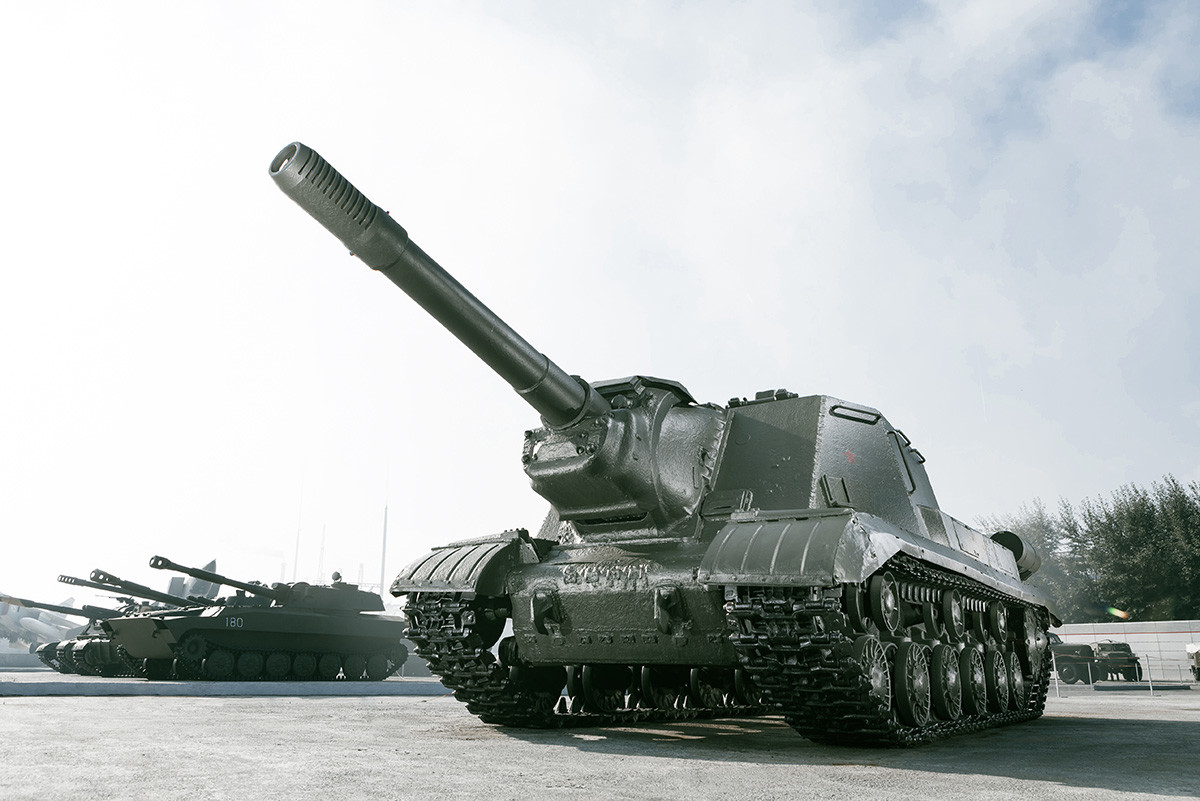
SU-152.
Nikolay Kovalevsky/UMMC Museum of Military and Civilian EquipmentIn the Battle of Kursk, the SU-152 (152 mm caliber) self-propelled heavy howitzers, mounted on the KV-1 chassis, were used for the first time against the new German Tiger and Panzer tanks. They were nicknamed the ‘Dosenöffner’ (“Can Opener”) by the enemy. And in 1944, when, as a replacement for the obsolete KV-1, the Red Army acquired the Soviet Union’s most powerful tank, the IS-2 (named after Joseph Stalin), which had 120 mm thick armor and a 122-mm main gun, the self-propelled howitzers began to be made for mounting onto its chassis. That is how the ISU-122 (with a 122 mm caliber gun) and the ISU-152 (152 mm caliber) came into being.
Katyusha & Andryusha
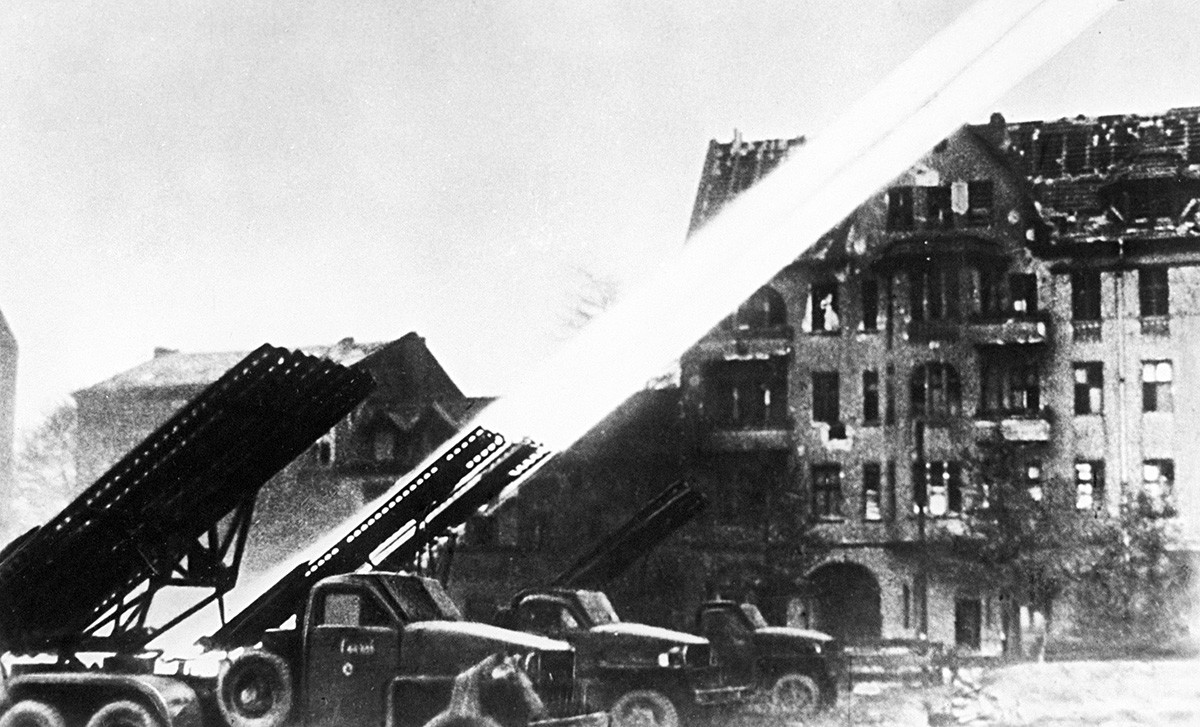
Soviet Katyushas in Berlin, 1945.
Sputnik“Katyusha went out to the riverbank, the bank was steep and high,” goes a Soviet song about a girl pining for her beloved who is serving in the army. After July 14, 1941, when a battery commanded by Captain Ivan Flyorov, positioned on a steep bank, carried out a strike on a concentration of enemy equipment and armor at a railway junction near Orsha (Belarus), the nickname ‘Katyusha’ was given to the BM-13 multiple rocket launcher system. “The rocket attack was like a hurricane” was how the German newspapers described Katyusha's destructive power. The rocket fire did have a fearsome effect. The blast waves from a number of rockets intersected, destroying all in their path. Katyusha also let out a very distinctive howl, prompting the Germans to coin the nickname “Stalin’s organ”. Katyushas were used for the entire course of the war from Moscow to Berlin, and became veritable symbols of victory.
Initially, rocket-propelled projectiles were used in aviation, but in the years 1938-41, Soviet designers came up with a multiple launcher that could be mounted on various platforms. The BM-13 (with 132 mm caliber projectiles) was predominantly mounted on American Studebaker
US6 trucks, which were supplied to the USSR under the Lend-Lease program and the BM-8-24 (82 mm caliber) was mounted onto T-60 tanks (in place of the turret); on towing tractors; and gunboats (photo from museum). More powerful BM-31-12 launchers firing 310 mm caliber rockets came into service in 1944. The rockets weighed 90 kg each (!) and were nicknamed ‘Andryushas’ (Based on a male name in Russia). The Red Army soldiers also had nicknames for enemy rocket artillery, referring to the Nebelwerfer mortar launchers as ‘Vanyushas’ [A nickname for the Russian male name ‘Ivan’].
The main Hollywood tank in the USSR
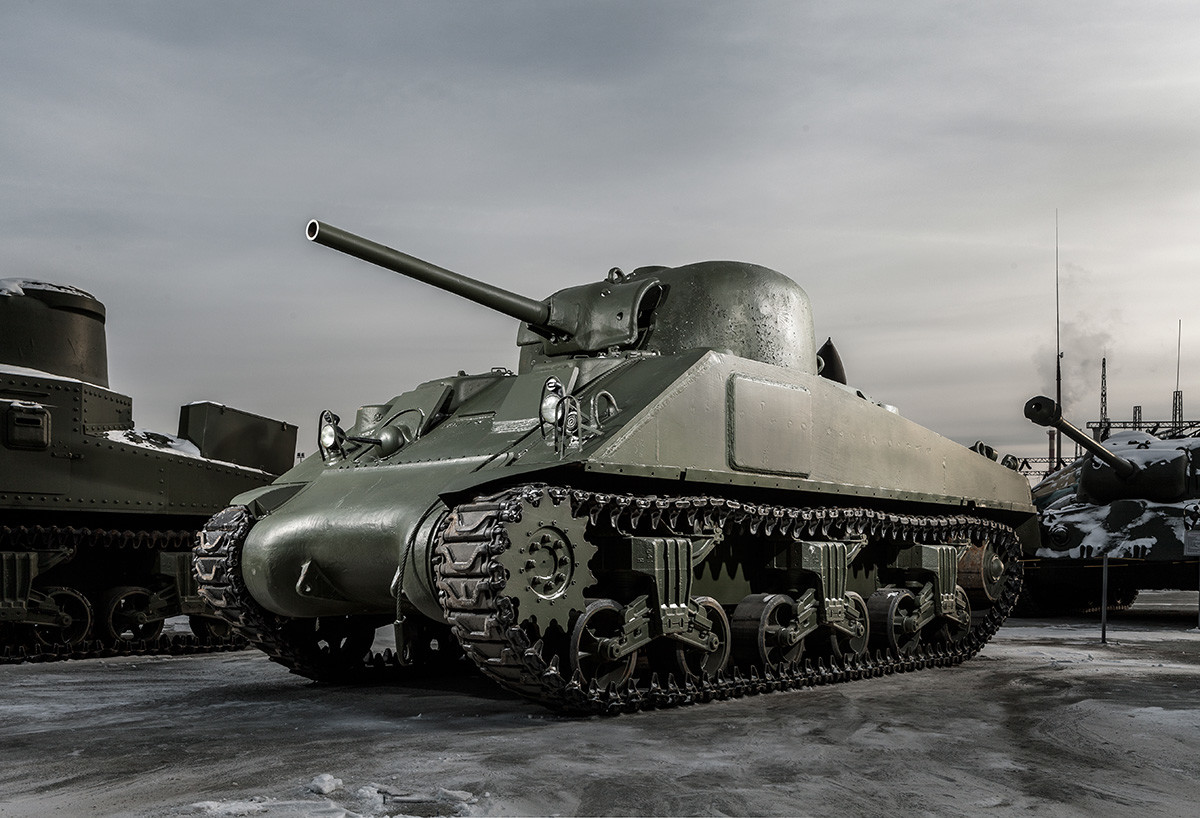
Sherman tank.
Nikolay Kovalevsky/UMMC Museum of Military and Civilian EquipmentIn the film Fury, the lead protagonist played by Brad Pitt commands a Sherman, the U.S.’s most famous tank. But it wasn’t just the Americans who used these models: From 1942 onwards, around 4,000 such tanks were delivered to the USSR under the Lend-Lease program.
American arms factories concealed presents in the tanks for the Soviet crews, leaving bottles of whiskey in the gun barrels. This was discovered when one of the presents got broken during cleaning of the gun. “The tank commander Viktor Akulov was almost reduced to tears when he saw the breakage!”, recalls Dmitry Loza in his book ‘Commanding the Red Army's Sherman Tanks’. After that, a precautionary sheet of tarpaulin was used when any further American "presents" were being extracted from the muzzles. The tanks had their baptism of fire in the Battle of Kursk, and were employed on all the fronts of the war.
From collective farm to front line
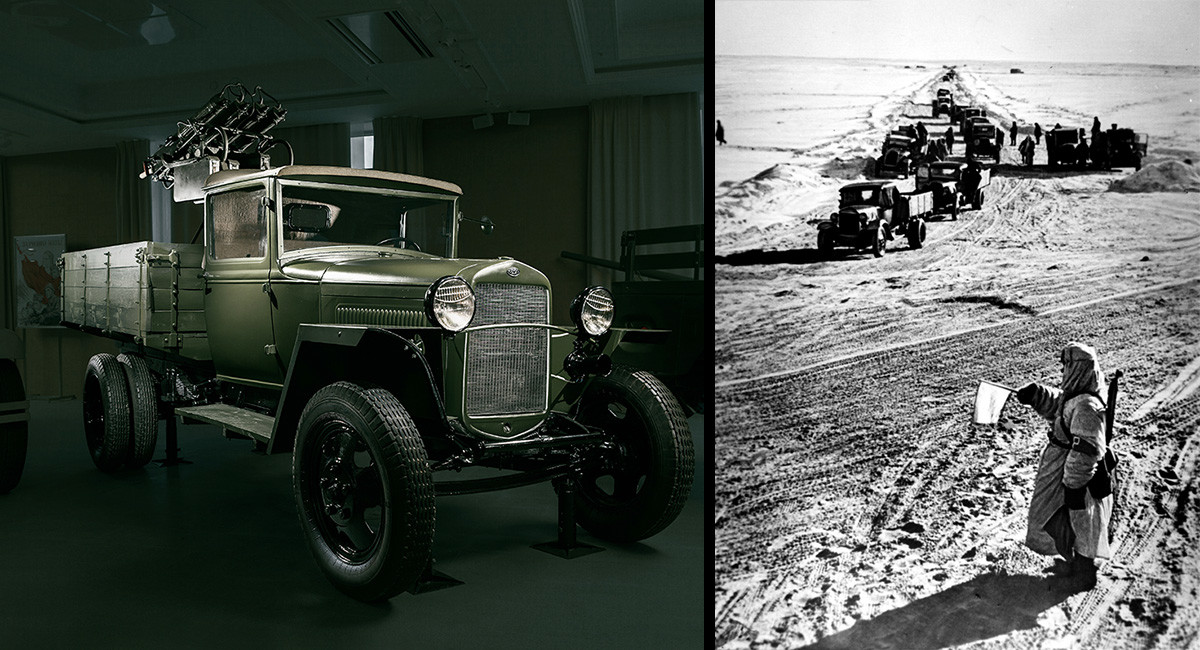
GAZ-MM; Lorries transport food through Ladoga Lake, 1942.
Nikolay Kovalevsky/UMMC Museum of Military and Civilian Equipment/TASSCivilian hardware adapted for army needs was brought to the front during the war. GAZ-AA trucks and the GAZ-MM modified version (known as the ‘Polutorka’, the “One-Point-Five”, because of its cargo capacity of 1.5 tons) became another symbol of the wartime era. They were built in enormous volumes - around one million had been assembled before the war, for the needs of the national economy. The output of trucks continued apace during the war, but, in an attempt to save metal, fabric screens were used instead of doors, the cab was made of wood and they were only fitted with a single headlamp, and even that was sometimes dispensed with altogether. Wheeled vehicles were in demand all the time: Even under Lend-Lease, road vehicles were supplied in greater numbers than any other category of equipment (more than 400,000 vehicles versus 11,000 aircraft and 12,000 tanks).
The ‘One-Point-Fives’ were used to transport troops and munitions, as well as for the mounting of weapons.
During the Siege of Leningrad, the only link with the rest of the country was the 30 km ice crossing across Lake Ladoga - the ‘Road of Life’, as it came to be known. The route was opened to vehicles in November 1941, when the first several dozen such ‘One-Point-Fives’ ventured across the still-fragile ice. They advanced with headlamps off and in a blackout in order to avoid coming under fire as the front line was close by. In that first winter alone, about 360,000 tons of cargo was delivered to the besieged city, while half a million inhabitants were evacuated from Leningrad - above all, children.
Armored train powered by the ‘Little Lamb’ locomotive
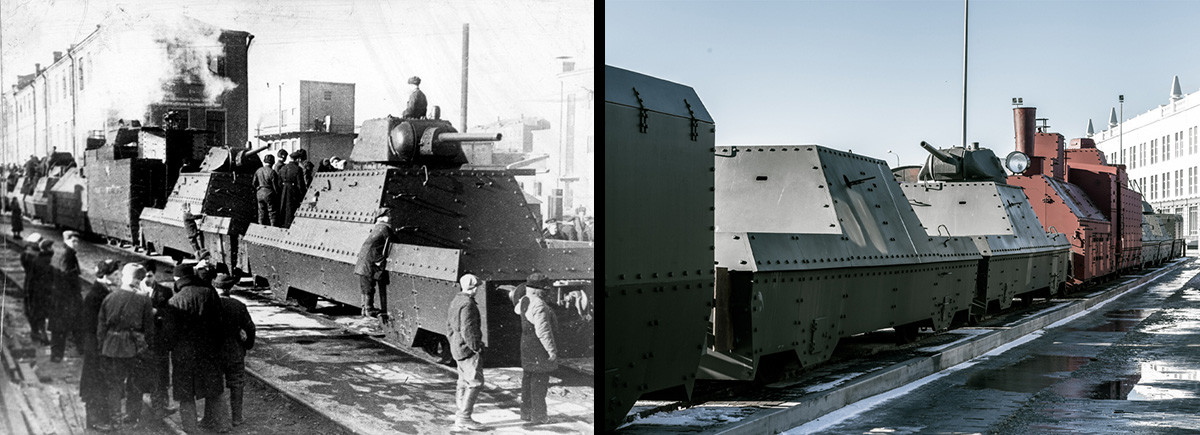
BP-43, a 1943 armored train. The locomotive is in the center of the train to push the wagons forward and back. In front of the locomotive and behind it are artillery platforms mounted with T-34 tank turrets and machine-gun nests. The train has anti-aircraft platforms fitted with AA guns.
Nikolay Kovalevsky/UMMC Museum of Military and Civilian Equipment; Archive photoCivilian steam locomotives and trains also served at the front. Without the railways, it would have been impossible to evacuate 2,500 factories, museums and theaters, moreover, in just the three months following the outbreak of war. Just imagine what was involved in moving a whole enterprise with its machines, tools and laboratories and transporting it all a distance of 2,000 kilometers! One of the most widely-used steam locomotives in those years was the ‘Ov’, affectionately known as the ‘Ovechka’ (“Little Lamb”). It seemed tiny in comparison with the giants of the E and FD series. It was predominantly used to haul evacuation trains, hospital trains and even armored trains. But, it was soon discovered that putting protective armor on other types of locomotive simply crushed the rails underneath them.
A train of this type - No. 746 - was built in 1943 with funds from the Moscow Metro. A large number of the crew, 58 men, were actually Metro workers. Along with a similar armored train, No. 737, it was involved in the first and most difficult stage of the Battle of Kursk. For three days, they provided cover for a 20 km sector between Belgorod and Prokhorovka, bringing down four aircraft and destroying six tanks and several mortar batteries during that time. Finally, the trains were put out of action at Sazhnoye station, where shrapnel from shells remains in tree trunks to this day. The crew were forced to evacuate, destroying the trains as they departed. This three-day delay to the advance of enemy troops allowed the Red Army to prepare for the decisive tank battle at Prokhorovka.
Boris Perlin (commander of an armored railroad car): For three days without respite our armored train held back the Tiger tanks and Ferdinand tank destroyers and repelled numerous enemy air raids with our anti-aircraft guns. July 7 was the most intensive day for our men. As a result of ceaseless firing, it became unbearably hot inside the wagon, and the whole crew removed their service shirts and even vests. Sweat got into our eyes, making it difficult to aim accurately. The combustion fumes made it difficult to breathe. It was an exam - not for a high school diploma, but in a life and death struggle. The Fascist tanks failed to break through in our sector. But the train was completely put out of action, with all its armored wagons and its locomotive smashed.
If using any of Russia Beyond's content, partly or in full, always provide an active hyperlink to the original material.
Subscribe
to our newsletter!
Get the week's best stories straight to your inbox